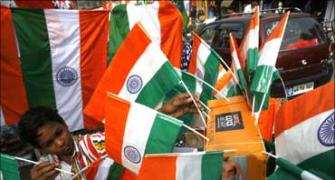Policy addresses needs of the textile industry and cotton farmers.
While cotton growers are pleased at the increase in cotton prices, boosted by relaxation of export curbs, the textile industry, particularly apparel exporters, seem uneasy.
 Their main worry is that the sustained 18-month rally in cotton prices and the consequential spurt in the cost of cotton yarn would dent the competitiveness of India-made garments in the global bazaar.
Their main worry is that the sustained 18-month rally in cotton prices and the consequential spurt in the cost of cotton yarn would dent the competitiveness of India-made garments in the global bazaar.
Indeed, apparel exports have slumped by 8 per cent in the first five months of this fiscal. But, the silver-lining is that the bad patch for the textile sector seems to have, more or less, ended.
The global demand for garments, which had remained subdued since the beginning of the economic recession, has begun showing signs of recovery.
Besides, some of India's formidable rivals, notably China and Bangladesh, appear set to lose the competitive edge due to anticipated rise in their production costs.
In China, the outlook for domestic cotton production is none-too-inspiring, forcing the country to look for higher cotton imports to build stocks.
Moreover, the appreciation of yuan has partially eroded the country's competitive edge. Bangladesh's garment industry, on the other hand, is facing sharp spurt in its overheads due to the wage hike agreement with workers.
It is also significant that the uptrend in cotton prices is not just confined to India but is global, with prices rising by 27 per cent in past one year in New York, one of the hubs of international cotton trade.
More importantly, international prices are expected to stay put at the current historically high levels at least till the end of the year when fresh US harvest hits the markets. Moreover, the revival in garment demand in the US and Europe in the wake of signs of economic recovery will help sustain the price rally for the benefit of cotton farmers, besides paving the way for higher garment exports from India to these markets.
Circumstances are, therefore, turning favourable for Indian apparel exports. This is reflected in some exporters' order books which have begun to swell despite local factors like rising costs, inflation-driven wage increases and frequent fluctuations in the rupee-euro-dollar exchange ratios.
The apparel exporters' apex body expects the total exports this year to exceed last year's $10.7 billion, even if the goal of $12 billion remains elusive.
This year's cotton production, on the other hand, is expected to touch a new high, thanks to over one million hectare larger cotton plantings, coverage of nearly 90 per cent of the acreage under the insect-protected transgenic Bt-cotton and good rains.
This should take care of the raw material supplies for the textile industry despite opening up of exports.
That apart, the gesture of cotton exporters committing themselves to exporting only surplus stocks, after meeting the domestic demand, should satisfy all stakeholders in the cotton sector. Export of extra stocks will help ensure better returns for cotton farmers which alone can sustain their interest in cotton cultivation.
The export cap of 5.5 million bales fixed by the government, subject to its review in November after the demand-supply scenario becomes unambiguously clear, seems fairly reasonable as it would still leave a comfortable closing stock of over 5 million bales at the end of 2010-11 cotton year.
The need, therefore, is to fully tap emerging opportunities rather than worry too much about domestic constraints.







